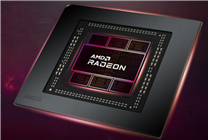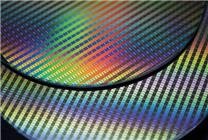Unlocking FSR 4: A Breakthrough for Older AMD Graphics Cards
Summary:
- Recent developments allow older AMD graphics cards to utilize FSR 4, enhancing image quality while minimally affecting frame rates.
- Users have reported significant improvements in graphics clarity, particularly in high-demand games.
- This method currently works on Windows-based games and requires a manual DLL modification.
The landscape of graphical fidelity in gaming is evolving rapidly, with AMD’s FidelityFX Super Resolution (FSR) technology at the forefront. The latest advancement in this realm is the capacity to enable FSR 4 on older AMD graphics cards. This breakthrough not only improves image quality but does so with a minimal impact on frame rates.
The Technology Behind FSR 4
At the end of August, AMD inadvertently released the complete source code for FSR 4 along with the FidelityFX Software Development Kit (SDK). Among the various components was an INT8 computing library that allowed savvy developers to experiment with its capabilities. A notable Reddit user, known as AthleteDependent926, took the initiative to manually compile a replacement DLL that enables this new technology on a range of graphics cards—including RDNA 3, RDNA 2, and even NVIDIA’s RTX 30 series.
Performance Analysis
Real-world tests illustrate the benefits of this new technology. For instance, users running Cyberpunk 2077 at 1440p settings with ray tracing found that replacing the native FSR 3.1 with FSR 4 resulted in only a 6-7 FPS drop in average frame rates. More importantly, issues such as grass flickering and edge jagging were significantly reduced. Players reported a considerable increase in overall image clarity.
It’s worth noting that while frame rendering times may triple with FSR 4 activation, switching to a "balanced" level can mitigate performance losses while still showcasing superior image quality when compared to previous algorithms.
Steps for Implementation
Currently, enabling FSR 4 on older AMD cards requires specific conditions:
-
Operating System: The method is applicable mainly for standalone Windows games.
- DLL Modification: Users must replace and enable the FSR 4 functionality through the Optiscaler tool.
Despite this method’s success, AMD has not yet officially stated whether it will support backward compatibility for these older models or if further optimizations will come in the future. Therefore, players considering this enhancement should weigh the trade-offs between potential performance dips and better visual fidelity.
Conclusion
The recent developments surrounding FSR 4 present an exciting opportunity for gamers using older AMD graphics cards. By enabling this advanced upscaling feature, players can experience enhanced graphical performance in their favorite titles without significant frame rate penalties. However, as with all modifications, users should remain informed about the potential risks and benefits before proceeding.
As the gaming community continues to explore this new frontier, it will be intriguing to see how AMD responds and what further innovations may lie on the horizon.
By staying informed about advancements in graphics technology and engaging with community-driven initiatives, gamers can optimize their experience while enjoying the latest titles. FSR 4 offers a glimpse into the future of gaming graphics, where older hardware can still deliver exceptional visual quality.







